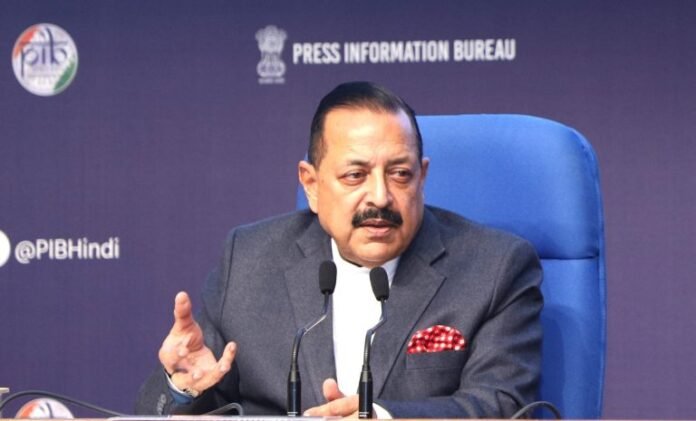TNL Network
NEW DELHI, December 31: ISRO’s successful Space Docking Experiment (SPADEX) has marked a transformative milestone in India’s space exploration journey, showcasing the nation’s prowess in advanced space docking technology. Union Minister Dr. Jitendra Singh hailed the achievement as a historic breakthrough while addressing the media in New Delhi following the launch of PSLV-C60 from Sriharikota on December 30.
The SPADEX mission involves the development and demonstration of technologies for spacecraft rendezvous, docking, and undocking, utilizing two small satellites. “These capabilities are critical for future endeavors like satellite servicing, space station operations, and interplanetary missions,” Dr. Singh emphasized. The docking operation is scheduled for January 7, 2025, at noon.
Dr. Singh outlined the primary objectives of SPADEX, which include demonstrating spacecraft docking technology, showcasing controllability in docked conditions to extend the life of target spacecraft, and testing power transfer between docked satellites. Post-docking activities will involve independent payload operations by the spacecraft.
The Minister also highlighted a pioneering collaboration between the Department of Biotechnology and ISRO to explore the intersection of biology and space. “India will lead in ‘Space-Biology’ under Prime Minister Narendra Modi’s vision, studying physiological changes in space environments,” Dr. Singh stated.
Reflecting on India’s evolving space sector, Dr. Singh credited Prime Minister Modi for initiating transformative changes, notably through the 2023 New Space Policy, which opened doors for private sector participation. This policy has fueled the growth of space startups, with the sector witnessing a surge from fewer than 10 startups in 2021 to nearly 300 by 2023.
Startups like AgniKul Cosmos and Skyroot Aerospace have spearheaded significant advancements, including private launchpads and sub-orbital launches, further reinforcing ISRO’s infrastructure and attracting global attention.
Dr. Singh projected the space economy to grow from $8.4 billion in 2023 to $44 billion by 2033, with ₹1000 crore in investments recorded in 2023 alone. He outlined an ambitious roadmap for India’s space sector:
- January 2025: NAVIC advancements and mobile communication satellite launch.
- February 2025: Vyommitra, a humanoid robot, will simulate astronaut tasks for Gaganyaan.
- 2026: India’s first crewed Gaganyaan mission.
- 2035: Establishment of India’s space station, Bharat Antariksh.
- 2047: First Indian astronaut to land on the moon.
Dr. Singh also celebrated achievements in 2024, including the Aditya L1 solar mission and successful satellite launches for global clients. India’s space sector has become a significant foreign exchange earner, with €85% of revenues from launching foreign satellites generated in the past eight years.
Emphasizing the wide-ranging applications of space technology in agriculture, defense, water management, and smart cities, Dr. Singh spotlighted initiatives like Mission Mausam for weather forecasting as examples of ISRO’s growing impact.
“Under Prime Minister Narendra Modi’s leadership, India’s space and science capabilities are scaling unprecedented heights,” Dr. Singh concluded. “The coming years will solidify our position as a global leader in space exploration.”



Recent Comments